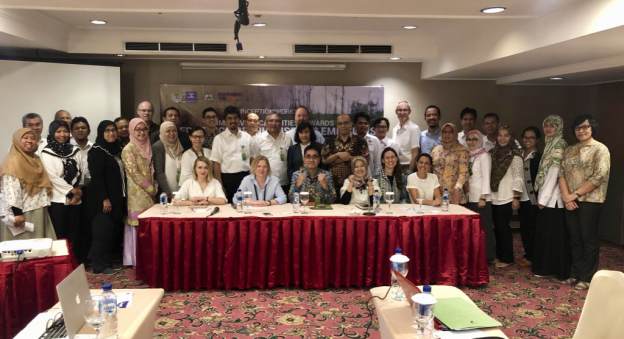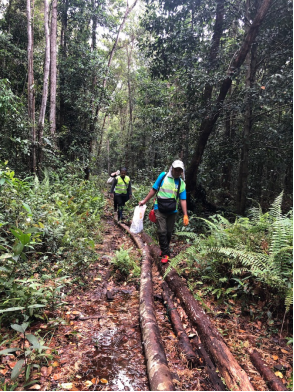Developing a burning interest in peatlands
Indonesia is one of the last bastions of mega-biodiversity; unfortunately during the twenty-first century it has become notorious for its haze problem and associated emissions from peatland burning, as well as land conversion. While the problem is severe, the actual numbers of emissions from peat fires have, to this point, not been included in official Indonesian reporting to the United Nations Framework Convention on Climate Change (UNFCCC). This is because the economy lacks both a methodology to measure such emissions and empirical data sets, which are preventing the economy from moving from Tier 1 reporting that uses default non-specific formulas, to Tier 2 reporting that uses country-specific calculations. Most economies aspire to Tier 2 reporting as it is one of the requirements to receive results-based compensation, such as from REDD+. Aiming to help Indonesia provide such empirical data and calculation methodology, APFNet teamed up with Indonesia’s Forest Research and Development Center (FOERDIA) under the Ministry of Environment and Forestry of Indonesia, and the University of Melbourne, Australia to develop the new project “Improving Capacities towards Reducing Greenhouse Gas Emissions from Peat Swamp Forest Fires in Indonesia”. The project officially started in January 2019 and the inception workshop was held on 27 February. Representatives from the project partners, the Australian Government, which contributed funds to the project, as well as international organizations, such as the Center for International Forestry Research (CIFOR), the Food and Agriculture Organization of the United Nations (FAO) and the United Nations Environment Programme (UNEP) attended the one-day meeting. Participants were greeted with welcome remarks by Dr Kirsfianti Linda Ginoga, the Director of FOERDIA. Dr Agus Justianto, Director-General of FOERDIA, then officially launched the project and Ms Anna Finke, the project manager from APFNet and Ms Kate Snowball from the Australian Embassy provided opening remarks. Lastly, Dr Liubov Volkova, the leading researcher in this project from the University of Melbourne, congratulated everybody on the excellent preparation and smooth start of the project.

Inception workshop participants
In the afternoon Dr Haruni Krisnawati, the leading researcher in FOERDIA for the project, explained the approach and key objectives to the participants. She observed that while specific peat emissions are currently not reported, overall emissions’ reporting to the UNFCCC just assume that 100 percent of the peat is burned during each event, an assumption that grossly misrepresents the reality. In fact, if that was the case the site likely would not be able to burn multiple times, as is currently the case. She emphasized that for future reporting, factors such as burn patchiness, fire severity, the fuel type burned, the fire return interval and combustion factors will have to be considered, factors this project is precisely attempting to assess by analysing peat areas with different fuel properties that have been burned multiple times.
Next, Mr Radian Bagiyono, the Deputy Director of the Directorate of Forest and Land Fire Management, gave an overview of peatland fire management in Indonesia, highlighting how prevention efforts are now at the front and centre of government action. Mr Budiharto, the Deputy Director of the Directorate of GHG Inventory and MRV, introduced the current practices for greenhouse gas (GHG) inventory and emissions from peat swamp forests, emphasizing that more accurate methods for peatland emissions are needed.
Finally, all participants discussed ways this project could achieve synergies with similar projects of other organizations, such as UNEP, and how it can be ensured that the greatest benefit for the Indonesian Government can be drawn out of this research.
Overall, all participants were confident that this project will make a significant contribution to climate change-related emissions’ reporting in Indonesia.

Research in peatlands during the rainy season can be a muddy business.




